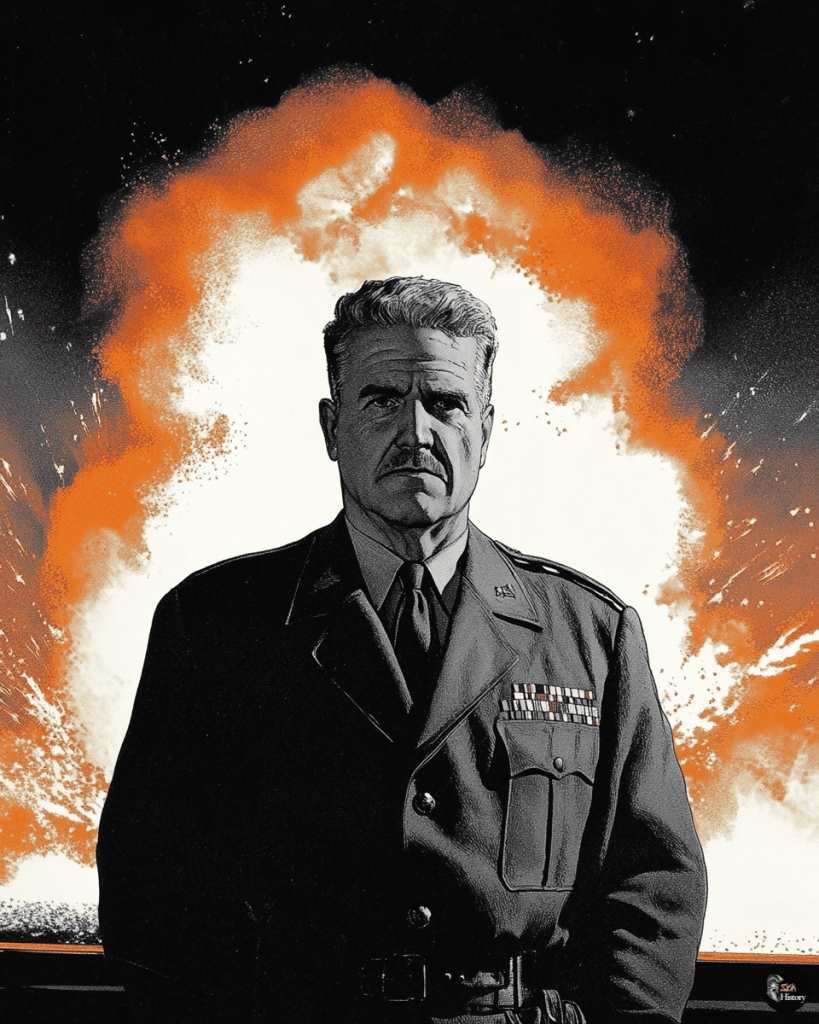Leslie Groves, a name synonymous with one of the most pivotal scientific endeavors in history, played a crucial role in shaping the 20th century. As the director of the Manhattan Project, Groves oversaw the development of the world’s first atomic weapons during World War II.
His leadership and project management skills were instrumental in bringing together the brightest scientific minds and vast resources needed to achieve this monumental task.
Groves’ journey began in the U.S. Army Corps of Engineers, where he honed his skills in large-scale construction projects. His most notable pre-war achievement was overseeing the building of the Pentagon. This experience prepared him for the immense logistical challenges he would face as the head of the Manhattan Project.
Groves’ ability to navigate the complex intersection of military strategy, scientific research, and top-secret operations made him the ideal candidate to lead this unprecedented effort.
The Manhattan Project stands as a testament to the power of military-scientific collaboration in wartime. Under Groves’ direction, a network of scientists, engineers, and military personnel worked tirelessly to unlock the secrets of nuclear fission.
Their efforts culminated in the creation of the atomic bombs that would ultimately end World War II and usher in the atomic age. The project’s success not only altered the course of the war but also set the stage for the Cold War and the nuclear arms race that followed.
Leslie Groves and the Manhattan Project
Leslie Groves played a pivotal role in the development of the atomic bomb during World War II. His leadership of the Manhattan Project combined military discipline with scientific innovation, resulting in one of the most consequential technological achievements of the 20th century.
The Military-Scientific Partnership
Groves, a U.S. Army Corps of Engineers officer, brought his formidable organizational skills to the Manhattan Project. He fostered an unlikely alliance between military personnel and some of the world’s brightest scientific minds. This partnership proved crucial to the project’s success.
Groves’ selection of J. Robert Oppenheimer as the scientific director of Los Alamos Laboratory was particularly significant. Despite initial reservations about Oppenheimer’s background, Groves recognized his brilliance and leadership potential. The two men formed an effective, if sometimes tense, working relationship.
The general’s no-nonsense approach complemented the scientists’ theoretical expertise. He ensured that resources were allocated efficiently and that security measures were stringent, allowing the researchers to focus on their groundbreaking work.
Journey to the Atomic Bomb
Groves oversaw the construction of massive research and production facilities across the United States. Under his supervision, the uranium enrichment plant at Oak Ridge, Tennessee, and the plutonium production complex at Hanford, Washington, were built at breakneck speed.
His decisiveness was evident in the choice of Los Alamos as the site for the secret laboratory. The remote location in New Mexico provided the isolation and security needed for such a sensitive project.
Groves pushed relentlessly for results, setting ambitious deadlines and demanding progress reports. His drive and determination kept the project moving forward, even in the face of significant technical challenges and setbacks.
Securing the War’s Last Great Secret
Maintaining secrecy was paramount to the Manhattan Project’s success. Groves implemented a compartmentalization strategy, ensuring that most workers only knew about their specific tasks, not the overall project.
He established rigorous security protocols, including background checks, restricted areas, and code names. The general even secured a AAA priority for the project, giving it precedence over other wartime efforts.
Groves’ focus on security extended to the aftermath of the bomb’s use. He played a key role in shaping the narrative around the atomic attacks on Japan and in the transition of atomic research to civilian control after the war.
Legacy and Impact
Leslie Groves’ leadership of the Manhattan Project left an indelible mark on world history. His efforts not only shaped the outcome of World War II but also set the stage for decades of geopolitical tension and scientific advancement.
Building Blocks of the Cold War
Groves’ work on the Manhattan Project laid the foundation for the Cold War era. The successful development of atomic weapons under his watch transformed global power dynamics, ushering in a new age of international relations. His management style and emphasis on secrecy became a blueprint for future classified military projects.
The infrastructure and scientific networks established during the Manhattan Project continued to play crucial roles in post-war America. Many of the facilities, like Los Alamos National Laboratory, remained at the forefront of nuclear research and development. Groves’ legacy lived on through these institutions, which continued to shape U.S. defense policy for decades.
The Genesis of Nuclear Deterrence
Groves’ leadership in creating the atomic bomb inadvertently gave birth to the concept of nuclear deterrence. This strategy, based on the threat of massive retaliation, became a cornerstone of Cold War diplomacy.
The Manhattan Project’s success under Groves’ direction demonstrated the immense destructive power of nuclear weapons, leading to a global arms race.
The project’s emphasis on scientific collaboration and rapid technological advancement set a precedent for future defense initiatives. Groves’ ability to manage a complex, multifaceted operation involving both military and civilian experts became a model for large-scale government projects.
His work thus not only impacted global politics but also influenced how nations approached scientific research and development in the pursuit of national security.

